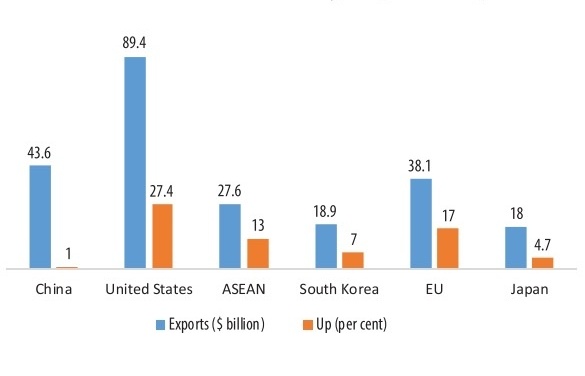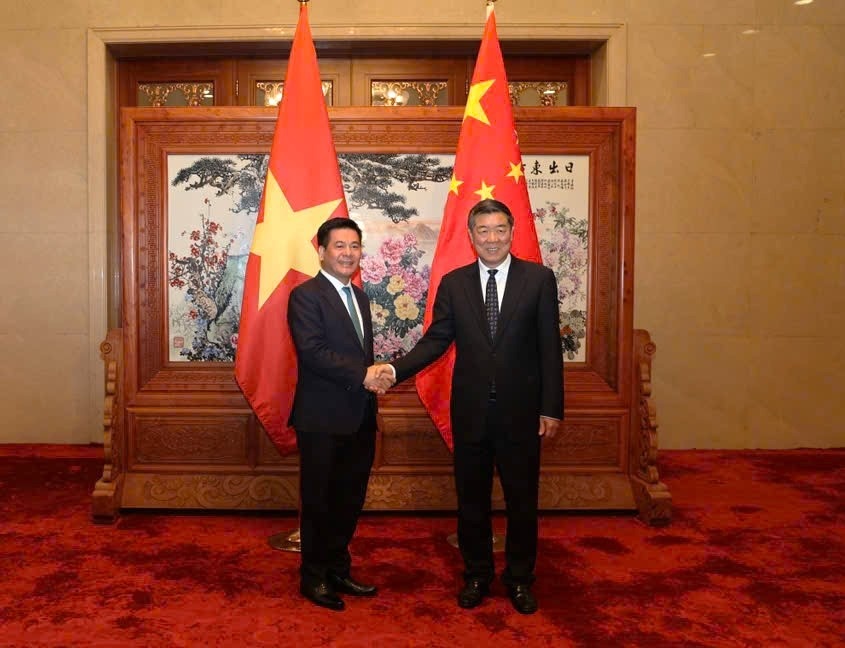Banks gaze into the crystal ball
Vietnam might miss the boat to WTO membership this year, but accession will happen, there is no doubt. While this global institution directly deals with matters of global trade, and foremost with free trade affairs, everyone understands that strategic issues in relation to capital and money markets would certainly be part of the game.
 State-owned banks will still have plenty of room to flex their considerable muscle |
In light of the above statement, in this exploratory analysis we consider the situation of state-owned commercial banks and try to predict their standings in a post-WTO economy.
Vietnam’s new-elected Prime Minister Nguyen Tan Dung has signed off on the government’s decision to equitise almost all state-owned enterprises in the first week of October 2006, a very bold move fostering the problematic SOE system. These SOEs have had nearly two decades to reform themselves. However, most efforts were made to no avail, and we could easily come across their shrinking role in the society.
It is not difficult to realise that the laissez-faire reform policy has been inoperative since the beginning due to a strong inertia within the state sector to maintain the current position, plus a diverse range of self interests. Now a new government decision precipitates those cost-centres of the economy in hopes of a radical speed-up of this evolution.
In this view, we should not mistakenly ignore those financial powerhouses, state-run commercial banks. Today, they are comparatively very big in size and possess a huge source of finances that no one can overlook. Also they are source of risks and uncertainty if one day figures unveil that these state banks are on the brink of distress with sizable uncollectibles and non-performing assets. The government did not overlook them either, so that an approval in principle for equitising three major state banks becomes a reaffirmation of the near-future path of reform.
According to the State Bank of Vietnam, the ratio of bad debt to outstanding loans in the Vietnamese banking system is safe. The financial community is concerned about these numbers because the WB and the IMF often quote that Vietnamese banks’ ratio of overdue debts is at least two figures. In addition, except for Vietcombank, CARs (Capital Adequacy Ratio) of the other three big state-owned commercial banks are below international standard of 8 per cent.
The deeply rooted problems
The major intangible assets state banks still enjoy can be seen quite clearly. First is the preference of the populace over the “private” banks. The word “state” to the majority of Vietnamese means something big, certain, strong, and safe. That is something we call a sense of trust. Banks love this very much, because if that feeling prevails, money deposits keep coming into their cash vault at a comparatively low cost of funds. The job of doing costly PR and marketing exercises becomes much less burdensome. Apparently, saving here is identical to a more handsome profit.
Second, their size allows them to comfortably overshadow much smaller private competitors who struggle to manage the flows of cash in and out, using all sorts of financial instruments to grab a tiny share of the growing market. This is what we call economies of scale.
Third, physical assets of state banks can be seen everywhere, from properties to nation-wide networks of agents and outlets. The troublesome Agribank has over 2000 branches at all levels, which help it easily get the mandate of making salary payments for the giant Social Insurance, a deal that the most powerful private Sacombank could hardly imagine.
And last, but not least, when some exception is needed to perform some tasks, only these state banks could manage to have that. In September 2006, the Governor of Vietnam’s central bank issued correspondences that allow ICB, BIDV, and VCB to jump over the very strict rule of the 15 per cent equity cap in a single loan to a single borrower. This enables these ICB, BIDV, and VCB to coordinate a $1.27 billion loan to Electricity of Vietnam, worth $321.3 million, $252.3m and $659.9m, respectively.
Naturally, we understand that state banks are very different from an average private bank. Thus, even if the question about their size, repayment certainty, muscle, and guaranteed safety is not very useful, the soundness of their operation is really questionable. We will soon appreciate that a sound banking operation is the only solution that decides a company’s fortune, and unsound practices will destroy the above ex ante values, if we can call them this. The market mechanism has forced state banks behave almost the same as private banks, competing in managing the flow of deposits, widening the network, luring capable personnel, and launching PR campaigns, although these are not necessarily building a sound operation. Having said that, we do not consider state banks to really be commercial banks. While the true market mechanism has assimilated all private banks in terms of installing best practices for improved competitiveness, no such assimilation happens with state banks. All their surface changes will not be able to remove problems deeply rooted in their operation, i.e. bad debts, directed loans, very weak risk management, and discretional practices. Will these state banks manage to retain their power given these profoundly “clandestine” problems in the post-WTO times? The answer is “no way”, simply because there won’t be two sets of rules for state and non-state players, not even for domestic and international ones. Stern market principles will give rise to safe and sound banking practices on an arm’s-length basis, and severely punish any defiance.
Enjoying artificial advantages triggered by privileges, for which state banks take for granted only proves the high degree of hedonism within the sector, and does no good to its competitiveness in the post-WTO time.
Where to start?
The above points suggest that we look for in-depth insights into the state banking system. Oversized state banks really hamper the bigger picture of market performance. Privately-run banks understand this system better than any of us. Therefore, they have embarked on a long-term race to improve their standing in the financial market. Since the society considers “size” a genuine value, private banks started inviting proactive new shareholders to participate in a new capital structure. Some, like Sacombank or more recently ACB, better their chances of making the exercise successful by listing shares on the stock market. The foreign institution’s shareholders have also brought in managerial skills, vision, and technology. These things are now clearly a critical success factor for those private banks. They are so important not because they produce an immediate cure for Vietnam’s weak banking sector, but because they gradually create a real setting for safe and sound operations. More importantly, the seeds of cultural values in arm’s-length transactions, business ethics, market trust and openness-to-change have been sown. Now the post-WTO struggle may make few private banks disappear. But those who survive the tough typhoon will prosper together with a firm tree of business culture. Unfortunately, business culture is multi-faceted, which could not be built on artificial advantages. Trying to cultivate the seed on a concrete floor cannot produce even a bud, no matter how much time or water is used. Maybe, the only way to change these state banks is to precipitate them into the wave of competition in open competition settings, apparently because fundamental work values of state banks are opposite to private banks. Currently the race to mobilise funds using interest rate as a weapon are only showing a hurried approach in decision making and business dealings, but are not improving competitiveness. Needless to say, consumption of capital does not necessarily mean the start of producing profit.
Our concluding remark is as simple as stating that the equitising of state banks could be a start of the revamp of the overall banking system, due to its substantive existence in our financial system. But this is really a meaningful exercise if, and only if the soon-to-be-equitised banks will be receptive to new post-WTO business settings, and proactively seek to install sound business culture.
No. 783/October 16-22, 2006
What the stars mean:
★ Poor ★ ★ Promising ★★★ Good ★★★★ Very good ★★★★★ Exceptional
Related Contents
Latest News
More News
- Central Bank of Cuba chief visits Hanoi to work with VBSP (November 22, 2024 | 15:49)
- Credit sees steady growth towards year-end (November 21, 2024 | 17:46)
- HDBank wins three titles at Vietnam Listed Company Awards (November 21, 2024 | 10:01)
- VLCA’s corporate governance mission (November 21, 2024 | 10:00)
- The promotion of ESG via banking (November 21, 2024 | 09:32)
- Standard Chartered committed to Vietnam’s financial success (November 21, 2024 | 09:24)
- Full ESG adoption the priority for Agribank (November 21, 2024 | 09:07)
- Banks entice youth with tech advances (November 21, 2024 | 08:00)
- Banks shaping the future as business advisors (November 20, 2024 | 21:00)
- ESG represents a shift towards sustainability for banks (November 20, 2024 | 13:00)




 Tag:
Tag:





















 Mobile Version
Mobile Version